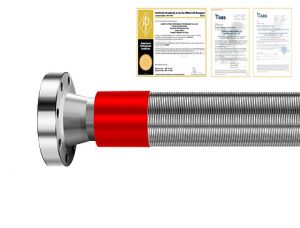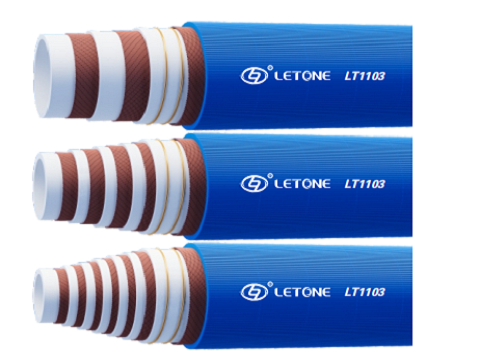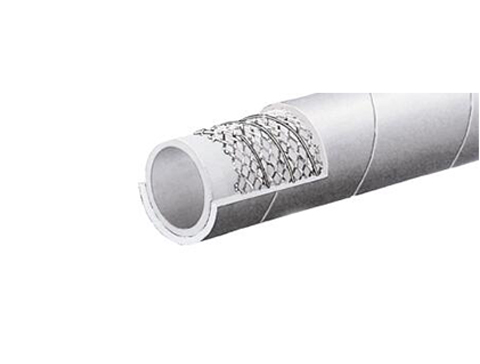In the vast field of petroleum exploration and extraction, high-pressure mud hoses serve as a key link between drilling equipment and underground rock formations, and their performance and reliability directly affect the efficiency and safety of drilling operations. This article will delve into high-pressure mud hoses under the API 7K standard, providing a comprehensive analysis from multiple dimensions including design principles, material selection, manufacturing processes, performance requirements, application scenarios, and maintenance and upkeep.
1、 Overview of API 7K Standard
The 7K standard developed by API (American Petroleum Institute) is a technical specification for fluid transport hose systems used in drilling operations in the oil and gas industry. This standard specifies in detail the design, manufacturing, testing, and performance requirements for high-pressure mud hoses, aiming to ensure that the hoses can withstand high pressure, high temperature, wear, and chemical corrosion in extreme working environments, ensuring the safety and efficiency of drilling operations.
2、 Design principles and material selection
The design of high-pressure mud hoses needs to comprehensively consider multiple factors such as pressure bearing capacity, wear resistance, corrosion resistance, and flexibility. Its core structure is usually composed of multiple layers, including an inner adhesive layer, a reinforcement layer (such as steel wire weaving or winding layer), a middle adhesive layer, and an outer adhesive layer. The inner rubber layer directly contacts the mud and requires the use of wear-resistant, oil resistant, and corrosion-resistant synthetic rubber materials; The reinforcement layer provides sufficient tensile strength and pressure bearing capacity; The outer adhesive layer plays a role in protecting the internal structure and resisting external environmental erosion.
 3、 Manufacturing process
The manufacturing process of high-pressure mud hoses under the API 7K standard is extremely rigorous, including material inspection, extrusion molding, weaving or winding, vulcanization, assembly, and final testing. Among them, extrusion molding needs to ensure uniform thickness of the inner and outer adhesive layers and no bubbles; The weaving or winding process requires precise control of wire tension and density to ensure the overall strength of the hose; The vulcanization process involves tightly bonding multiple layers of materials to form a sturdy and durable hose structure. Ultimately, each hose must undergo rigorous pressure testing, pulse testing, and corrosion resistance testing to ensure compliance with the API 7K standard requirements.
4、 Performance requirements
According to the API 7K standard, high-pressure mud hoses must meet the following main performance requirements:
1. Pressure bearing capacity: The hose should remain stable and leak free at the rated working pressure.
2. Temperature resistance: able to adapt to high temperature environments during drilling operations and maintain stable material properties.
3. Wear resistance: When in long-term contact with mud and drilling cuttings, the inner rubber layer should have good wear resistance to reduce wear.
4. Corrosion resistance: It has good resistance to various chemicals that may be encountered during the drilling process.
5. Flexibility: Maintain sufficient flexibility to facilitate flexible layout in complex terrains and narrow spaces.
5、 Application scenarios
High pressure mud hoses are widely used in fields such as oil drilling, shale gas extraction, and geothermal exploration. During the drilling process, it is responsible for transporting mud from the mud pump to the drill bit, playing an important role in cooling the drill bit, carrying drilling cuttings, and maintaining wellbore stability. At the same time, the hose also needs to withstand high-pressure reaction forces from underground rock formations, which is an indispensable key component in drilling operations.
6、 Maintenance and upkeep
Reasonable maintenance and upkeep are crucial to ensure the long-term stable operation of high-pressure mud hoses. This includes but is not limited to regularly inspecting the appearance of hoses for signs of damage, cracks, or wear; Regularly replace aging or damaged hose components; Avoid excessive bending, compression, or exposure to extreme environmental conditions during storage and transportation; And develop a scientifically reasonable replacement cycle plan based on usage.
In summary, the high-pressure mud hose under the API 7K standard is one of the important equipment in the field of petroleum exploration and exploitation, and its performance and reliability are directly related to the safety and efficiency of drilling operations. By gaining a deep understanding of its design principles, material selection, manufacturing processes, performance requirements, and maintenance and upkeep, we can better select, use, and maintain these key components, contributing to the development of the petroleum industry. With the continuous advancement of technology, we have reason to believe that future high-pressure mud hoses will become more intelligent and efficient, providing more solid and reliable support for oil exploration and extraction.
3、 Manufacturing process
The manufacturing process of high-pressure mud hoses under the API 7K standard is extremely rigorous, including material inspection, extrusion molding, weaving or winding, vulcanization, assembly, and final testing. Among them, extrusion molding needs to ensure uniform thickness of the inner and outer adhesive layers and no bubbles; The weaving or winding process requires precise control of wire tension and density to ensure the overall strength of the hose; The vulcanization process involves tightly bonding multiple layers of materials to form a sturdy and durable hose structure. Ultimately, each hose must undergo rigorous pressure testing, pulse testing, and corrosion resistance testing to ensure compliance with the API 7K standard requirements.
4、 Performance requirements
According to the API 7K standard, high-pressure mud hoses must meet the following main performance requirements:
1. Pressure bearing capacity: The hose should remain stable and leak free at the rated working pressure.
2. Temperature resistance: able to adapt to high temperature environments during drilling operations and maintain stable material properties.
3. Wear resistance: When in long-term contact with mud and drilling cuttings, the inner rubber layer should have good wear resistance to reduce wear.
4. Corrosion resistance: It has good resistance to various chemicals that may be encountered during the drilling process.
5. Flexibility: Maintain sufficient flexibility to facilitate flexible layout in complex terrains and narrow spaces.
5、 Application scenarios
High pressure mud hoses are widely used in fields such as oil drilling, shale gas extraction, and geothermal exploration. During the drilling process, it is responsible for transporting mud from the mud pump to the drill bit, playing an important role in cooling the drill bit, carrying drilling cuttings, and maintaining wellbore stability. At the same time, the hose also needs to withstand high-pressure reaction forces from underground rock formations, which is an indispensable key component in drilling operations.
6、 Maintenance and upkeep
Reasonable maintenance and upkeep are crucial to ensure the long-term stable operation of high-pressure mud hoses. This includes but is not limited to regularly inspecting the appearance of hoses for signs of damage, cracks, or wear; Regularly replace aging or damaged hose components; Avoid excessive bending, compression, or exposure to extreme environmental conditions during storage and transportation; And develop a scientifically reasonable replacement cycle plan based on usage.
In summary, the high-pressure mud hose under the API 7K standard is one of the important equipment in the field of petroleum exploration and exploitation, and its performance and reliability are directly related to the safety and efficiency of drilling operations. By gaining a deep understanding of its design principles, material selection, manufacturing processes, performance requirements, and maintenance and upkeep, we can better select, use, and maintain these key components, contributing to the development of the petroleum industry. With the continuous advancement of technology, we have reason to believe that future high-pressure mud hoses will become more intelligent and efficient, providing more solid and reliable support for oil exploration and extraction.







